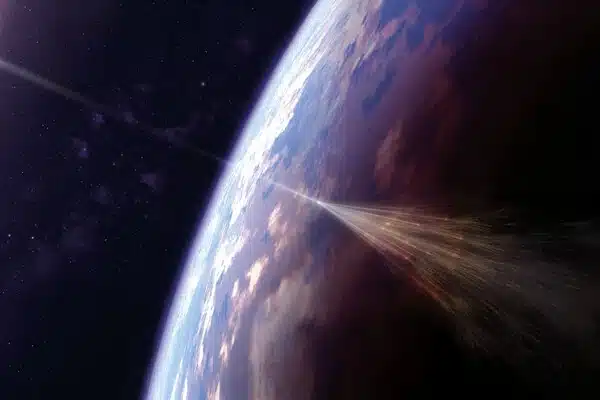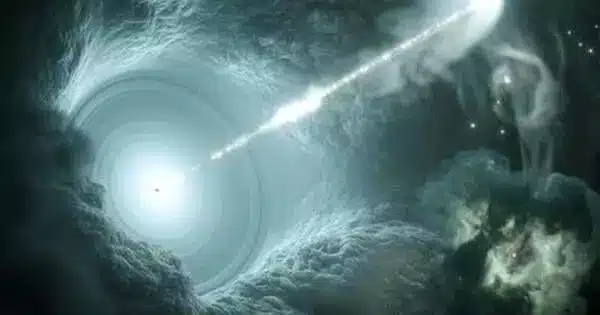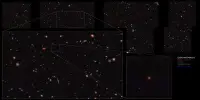Helium nuclei study is essential for furthering our understanding of cosmic ray genesis and propagation in the universe. Cosmic rays are high-energy particles that fly through space at nearly the speed of light. They are generally made of protons, helium nuclei (alpha particles), and heavier ions. They come from a variety of sources, and studying them can provide vital insights into astrophysical processes and the structure of the universe.
Since 2015, the CALorimetric Electron Telescope (CALET) aboard the International Space Station’s Kibo’s Exposed Facility (EF) has been measuring the flow of cosmic ray particles.
An international team of academics reports the results of a direct measurement of the cosmic ray helium spectrum using CALET data in a new study. In contrast to the previously assumed single power-law, an examination of flux data collected between 2015 and 2022 reveals that the energy distribution of cosmic ray helium nuclei follows a Double Broken Power Law.
Theoretical explanations underpin much of our understanding of the Universe and its unexplained events. Astronomers are studying cosmic rays, which are high-energy charged particles made up of protons, electrons, atomic nuclei, and other subatomic particles, to gain a better knowledge of distant objects and energetic events.
These studies have revealed that cosmic rays contain all of the elements in the periodic table, implying that these elements come from stars and high-energy events like supernovae. Furthermore, because cosmic rays are charged, their passage across space is impacted by the magnetic fields of interstellar phenomena and objects.
CALET has successfully observed energy spectral structure of cosmic ray helium, especially spectral hardening starting from around 1.3 TeV, and the tendency of softening starting from around 30 TeV.
Kazuyoshi Kobayashi
Detailed investigations of cosmic rays might thus not only shed light on their origins but also decipher the presence of high-energy objects and phenomena like supernova remnants, pulsars, and even dark matter. Japan, Italy, and the United States developed the CALorimetric Electron Telescope (CALET) on the International Space Station in 2015 in order to better observe high-energy radiations.
The particle flux of protons at high energies was substantially larger than expected, according to studies of the cosmic ray proton spectrum from 50 GeV to 10 TeV in 2018. These findings differed from typical cosmic ray acceleration and propagation models, which assume a “single power-law distribution,” in which the number of particles decreases as energy increases.
As a result, in a report published in 2022, the CALET team, which included Waseda University researchers, discovered that cosmic ray protons with energies ranging from 50 GeV to 60 TeV obeyed a “Double Broken Power Law.” This equation assumes that the number of high-energy particles increases until 10 TeV (known as spectral hardening) and then decreases as energy increases (known as spectral softening).

Extending these data, the team has discovered comparable tendencies of spectral hardening and softening in the cosmic ray helium spectrum acquired over a wide range of energy, from 40 GeV to 250 TeV.
The study was led by Associate Professor Kazuyoshi Kobayashi of Waseda University in Japan, with contributions from Professor Emeritus Shoji Torii, Principal Investigator of the CALET project, also affiliated with Waseda University, and Research Assistant Paolo Brogi of the University of Siena in Italy.
“CALET has successfully observed energy spectral structure of cosmic ray helium, especially spectral hardening starting from around 1.3 TeV, and the tendency of softening starting from around 30 TeV,” says Kobayashi.
These observations are based on data collected by CALET aboard the International Space Station (ISS) between 2015 to 2022. Representing the largest energy range to date for cosmic helium nuclei particles, these observations provide additional evidence for deviation of the particle flux from the single power-law model. The researchers noticed that deviation from the expected power-law distribution was more than eight standard deviations away from the mean, indicating a very low probability of this deviation occurring by chance.
Notably, the initial spectrum hardness observed in this data shows that there may be distinct sources or mechanisms involved in accelerating and spreading helium nuclei to high energies. The discovery of these spectral patterns is also corroborated by recent Dark Matter Particle Explorer discoveries, and it calls into question our present understanding of the genesis and behavior of cosmic-rays.
“These findings would significantly contribute to our understanding of cosmic ray acceleration and propagation mechanisms in supernova remnants,” says Torii.
These discoveries surely improve our understanding of the Universe. Even as we plan manned expeditions to the Moon and Mars, the energy distribution of cosmic-ray particles can provide more information about the radiation environment in space and its impact on astronauts.















